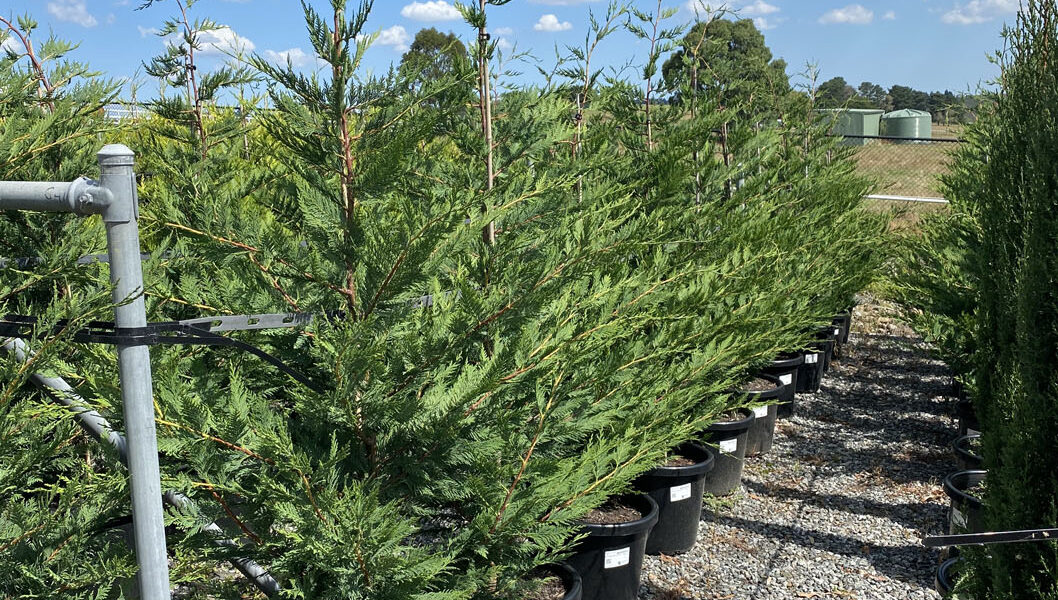Broadening your tree palette
By John Fitzsimmons
It’s always a good idea to build good relationships with your suppliers, especially when considering trees and structural shrubs in landscape designs because you could find your supplier offering a broader range of options than you were aware of.
Landscape designs are responses to a range of needs, wants and parameters presented by the designer, the client, the environment and site and sometimes even regulatory bodies. Having considered the plant palette down through Family, Genus and Species, what about the next level? What about botanical sub-species (naturally occurring) and the wide variety of cultivars, and special selections (usually resulting from “intentional human activity”), sometimes in forms further diversified further by rootstocks and grafting options?
The latter can often be named and subject to Plant Breeders Rights (PBR) regarding commercial naming and authorised propagation.
A cultivar is defined as a new form that must be distinct (from others), uniform and stable through repeated propagation.
| Family | Rosaceae |
| Genus | Malus |
| Species | domestica |
| Cultivar | Cripps Pink |
| Trade name | Pink Lady® |
| Natural mutation/sport* | ‘Rosy Glow’, ‘Lady in Red’, ‘Ruby Pink’, ‘Maslin’, ‘Barnsby,’ ‘Pink Belle’, ‘Lady Laura’ |
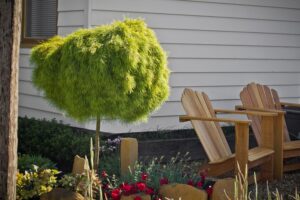
Many cultivars you may know and use already, especially the universally popular floral shrubs like roses, camellia and magnolia etc., but that’s not to say new options haven’t appeared or new site experiences aren’t now informing new use situations. That’s why a good working relationship with your specialist suppliers can lead to more, or more suitable, options in landscape designs.
Colour, form, size and foliage texture are often key differentiators.
The highly popular wattle Acacia cognata is a good example. This shrub or small tree native to south eastern Australia can grow from 0.5 to 10m high and popular cultivars include ‘Bower Beauty’, ‘Copper Tips’, ‘Fettuccini’, ‘Green Mist’, ‘Lime Magik’, ‘Limelight’, ‘Mop Top’ and ‘Waterfall’.
‘Copper Tips’ is a taller (H 3-5m x W 2-3m) version with copper-coloured new foliage contrasting with masses of yellow flowers in spring. Compare this with ‘Limelight’ growing about 1m x 1m and typically boasting lime green foliage. The similarly compact ‘Fettucine’ has decorative rippled, lime green foliage throughout the year, and new growth appears with coppery tones before morphing to the characteristic lime green colour. There’s even a grafted standard version of ‘Fettucine’ available.
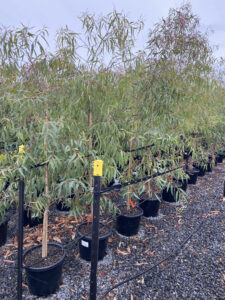
While height, foliage colour and form might be the focus, in other landscape situations a tree’s overall form could be valued. Tilia spp, variously referred to as Linden, Lime or Basswood trees, are a popular landscape tree used in avenues or where dense shade is needed. It can grow to 10m or more. Tilia americana ‘Bailyard’ Frontyard™ however usually forms an oval or rounded shape, while Tilia cordata ‘Baileyi’ Shamrock™ is more usually described as pyramidal.
Foliage colour and texture are also great elements to play with in landscape.
Cupressocyparis leylandii (Leighton’s Green cypress) is commonly utilised for screening and windbreaks. Quick to establish and fast growing, it will reach upwards of 12m. However, there is an improved version available Cupressocyparis leylandii ‘Madeline’ (Cypress Better Green ‘Madeline’) growing 30% faster, and its ‘feathered’ foliage allows it to be trimmed more neatly for a sharper line.
It’s simply another option.
Similarly, Melia azedarach is a white cedar which is highly regarded as an urban tree in streetscapes and urban landscapes, combining form, canopy and drought tolerance but the ‘Elite’PBR selection produces no fruit to compromise the species’ other advantages.
Another option.
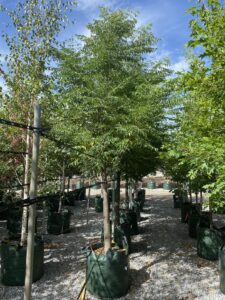
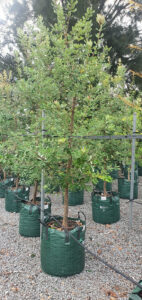
Lemon scented gum, Corymbia citriodora, is widely used, often growing to 20m. However, the ‘Scentuous’ syn. ‘Dwarf Pink’ version is smaller, growing to 7m x 3m at maturity. Due to its smaller size, it is very versatile, making it great for gardens of all sizes and perfect for streetscapes. It’s a slightly narrow domed tree that doesn’t shed its branches.
Yet again, just another option.
The popular coastal shrub Banksia integrifolia is usually thought of as a small tree growing to 15m.however B. integrifolia ‘Sentinel’® is smaller, 2.5m x 1m, making it great for small to medium gardens, large containers and narrow spaces. Due to its height and form, it is also a good selection for use along paths and driveways.
So, stay in close touch with your advanced tree suppliers. Even in a long game like advanced trees, innovation is always there, so regularly re-visit your supplier and keep abreast of the new options for your tree palette.
Main photo: Cupressocyparis leylandii ‘Leighton’s Green’ (Image: Speciality Trees)

